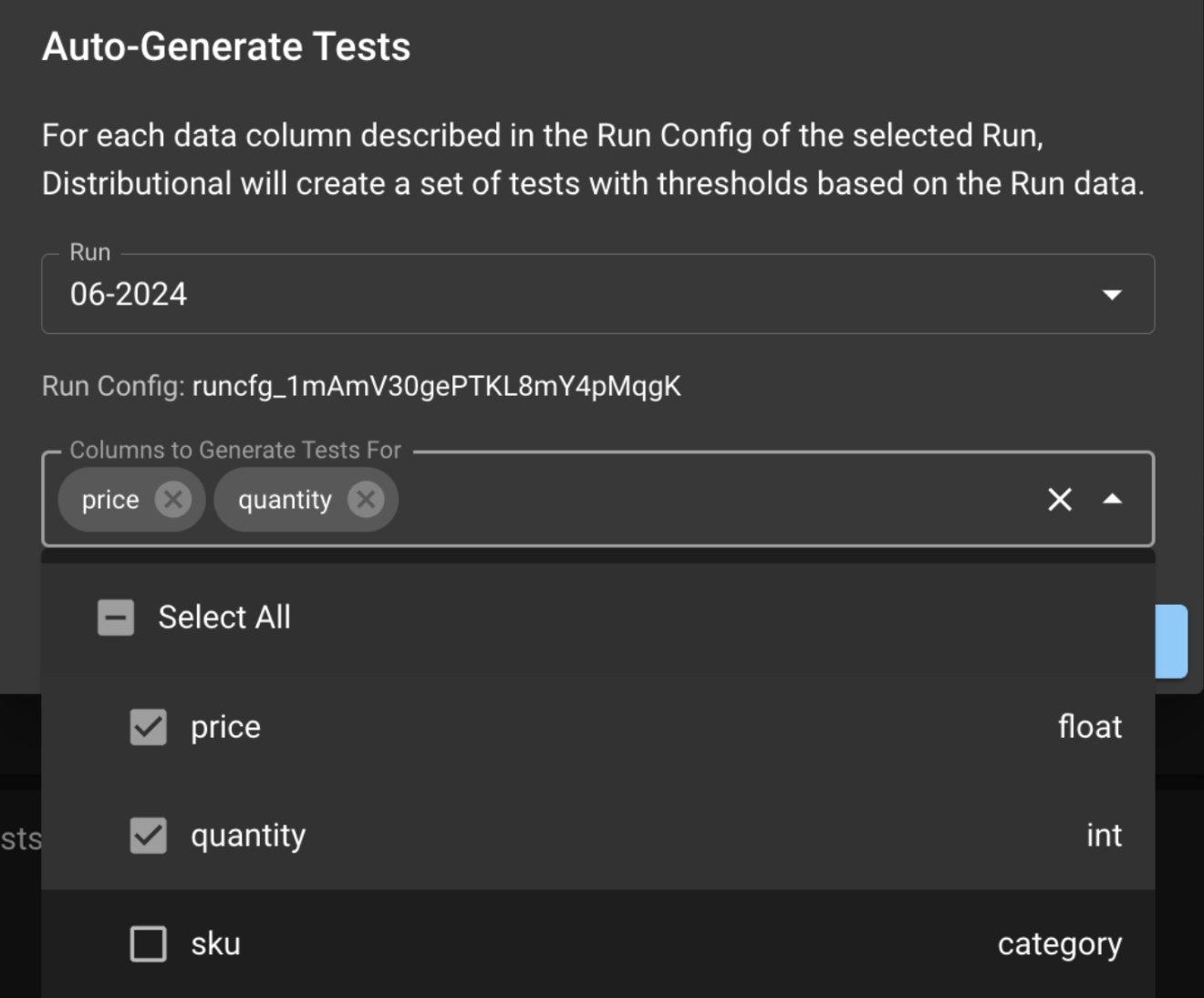Automated Production test creation & execution
Distributional can automate your Production testing process
Production testing is the core tool in the Distributional toolkit – it provides the ability to continually state whether your app is performing as desired.
To make Production testing easy to start using, we have developed some automated Production test creation capabilities. Using sample data that you upload to our system, we can craft tests which help determine if there has been a shift in behavior for your app.

The Auto-Generate Tests button takes you to the modal below, which allows you to choose the columns on which you want to test for app consistency.

Setting a Baseline through a Run Query
You also have the opportunity to set a Baseline Run Query, which gives you the freedom to define how far into the past you want to look to define “consistency”. After setting the Baseline, your tests will utilize it by default; you can override it at test creation time. Over time, your project will graphically render the health of your app, as shown below.

Recalibrating tests
You may later deactivate or recalibrate any of the automatically generated tests as you feel the desire to adapt these tests to meet your needs. In particular, we recommend that you review the first several test sessions in a new Project and recalibrate based on observed behavior. If you believe that no significant difference exists between tested runs, you should recalibrate the generated tests to pass.
Was this helpful?

